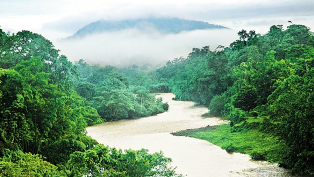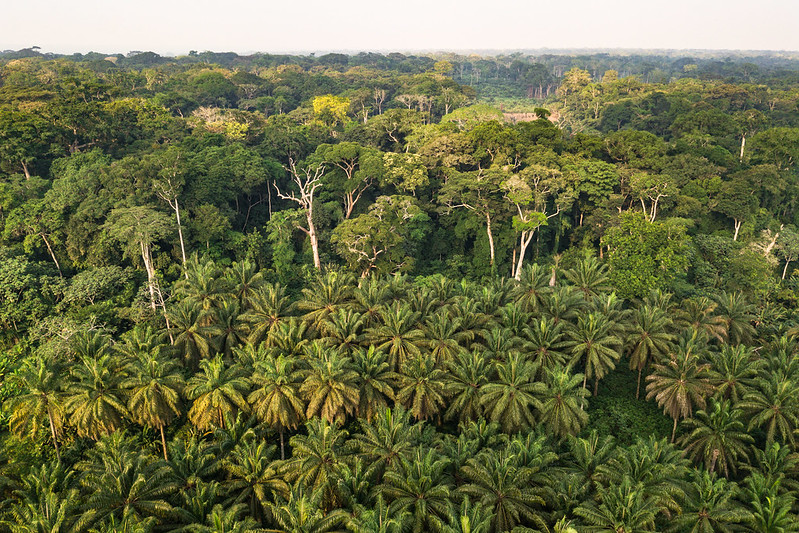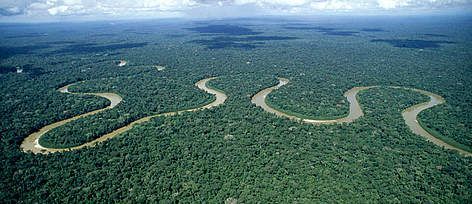Our earth is kept alive in great part by forests. They generate oxygen we breathe, store carbon to combat climate change, and cover many species and plants and trees. Actually, hotspots for biodiversity, over 80% of the land-based species in the planet call forests home. From massive trees to microscopic creatures, these ecosystems maintain equilibrium in the environment. Not all woods, nevertheless, are equivalent in scope. Some span millions of square kilometers over wide-open terrain. We are rating the 10 biggest forests in the world based on total land coverage in square kilometers (km² in this list). From vast tropical jungles to frigid northern forests, this measure reveals just how big these green giants are. Why is size important? More trees producing oxygen, more habitats for animals, and more buffers against global warming usually follow from larger forests. Imagine the Amazon, a term that comes up quickly when you discuss woods. In terms of land area, it is a beast and a powerhouse for species. Then there is Russia’s vast Siberian taiga across the north. These giants are life support systems rather than merely trees. Let us so examine the largest woods influencing our planet today by diving into the list.
The Top Ten Largest Forest In The World
10. Monteverde Cloud Forest Reserve
Location and Size: Located in Costa Rica, Monteverde Cloud Forest Reserve spans over 105,500 hectares.
Biodiversity: Rich in richness, this includes the brilliant quetzal, three-wattled bellbird, and a range of orchids and ferns flourishing in a foggy cloud forest habitat.
History: Originally a small reserve, it grew under the direction of conservationists when local citizens and scientists established it in 1972 to guard against deforestation.
Conservation Status: Though it is under threat from more visitors, conservation status is privately controlled with stringent policies funded by ecotourism which funds preservation efforts.
9. Kinabalu National Park

Location and Size: Around 754 km² in Sabah, Malaysia.
Biodiversity: Features approximately 4,500 types of plants and animals, including rare orchids and the Rafflesia bloom, the biggest flower worldwide, set against Mount Kinabalu.
History: Declared a protected area in 1964, it became well-known in 2000 for its biological worth, therefore demonstrating its long-standing significance to the preservation of biodiversity.
Conservation Status: Managed by local authorities, conservation status suffers from tourism and climate change; initiatives aimed on preserving its biological balance help to address these issues.
8. Daintree Rainforest
Location and Size: About 1,200km² in Queensland, Australia.
Biodiversity: One of the first rainforests, it boasts a variety of unusual plant species suited for its tropical environment as well as the cassowary, ancient ferns.
History: Indigenous Australians have lived there for millennia; in 1988 it was declared a protected area to help to maintain its old ecology.
Conservation Status: Protected within a broader heritage area with sustainable tourist projects in place, conservation status remains despite ongoing development pressures.
7. Xishuangbanna Tropical Rainforest

Location and Size: Yunnan, China. Size: Two-425 km² (242,500 hectares).
Biodiversity: Hosts more than 5,000 types of vascular plants and a varied fauna including Asian elephants and Indo-Chinese tigers, therefore creating a hotspot for biodiversity in China.
History: Originally set aside as a nature reserve in the 1980s to protect its tropical ecology, human activities and natural development have molded it.
Conservation Status: Managed as a natural reserve, it has challenges from agriculture and deforestation; continuous initiatives to support research and ecotourism help to mitigate these concerns.
6. Bosawas Biosphere Reserve

Location and Size: Northern Nicaragua. Area: About 20,000 km².
Biodiversity: One of the richest ecosystems in Central America, a huge tropical rainforest with jaguars, tapirs, and a great range of bird species.
History: Built on millennia of human interaction with environment, it established a biosphere reserve in 1997 to save biodiversity and assist nearby indigenous people.
Conservation Status: Managed by the government and local organizations, conservation status battles mining and illegal logging with an eye toward balancing preservation with livelihoods.
5. Tongass National Forest
Location and Size: Southeast Alaska, USA. Size: 16.7 million acres or roughly 67,567 km².
Biodiversity: The biggest national forest in the United States, it boasts glacial settings combined with temperate rainforests with bears, wolves, and plenty of fish.
History: Originally under government protection in 1907, it has supported later resource extraction businesses as well as indigenous populations.
Conservation Status: Under supervision by federal authorities, conservation status emphasizes preservation of old-growth forests while controlling discussions about sustainable tourism and logging.
4. Valdivian Temperate Rainforest

Location and Size: Southern Chile and Argentina. Area: 250,000 km², about.
Biodiversity: Known for old trees like the alerce and distinctive fauna include the pudú deer, which thrives in a chilly, damp temperate climate.
History: Indigenous people have been using it for thousands of years; during colonial and modern times, it was under great demand for farming and logging.
Conservation Status: Protected by national parks and reserves, conservation status is maintained by initiatives meant to stop deforestation and advance environmentally friendly land use.
3. New Guinean Rainforest

Location and Size: New Guinea (Indonesia and Papua New Guinea). Dimensions: About 632,810km².
Biodiversity: One of the most biodiverse areas on Earth, it has several endemic species including birds of paradise, tree kangaroos, and innumerable plant and insect life.
History: Mostly undisturbed because of its remoteness, it has nourished indigenous cultures for millennia; contemporary influences only lately have become more noticeable.
Conservation Status: National parks and conservation zones help to protect the conservation status; however, mining and logging represent major persistent hazards.
2. Congo Rainforest

Location and Size: Central Africa (six countries including DRC and Republic of Congo). Covers over 2,000,000 km².
Biodiversity: Rich with elephants, gorillas, and a great variety of bird and plant species under a deep canopy habitat, the second-largest tropical rainforest is biodiversity.
History: Home to indigenous people for thousands of years, it has been exploited since colonial times under current demands related to resource development.
Conservation Status: Protected by national parks and international treaties, conservation status fights mining, deforestation, and degradation connected to conflict.
1. Amazon Rainforest

Location and Size: South America (nine nations including Brazil and Peru). Dimensions: About 6,000,000 km².
Biodiversity: With an estimated 390 billion trees and over 16,000 species including jaguars, piranhas, and many flora, the biggest tropical rainforest is biodiverse.
History: Sustained indigenous tribes for millennia; in the 16th century it was colonized by Europeans; in recent years it has seen major destruction.
Conservation Status: Protected by national parks and international projects, conservation status addresses serious challenges from agriculture, logging, and fires




